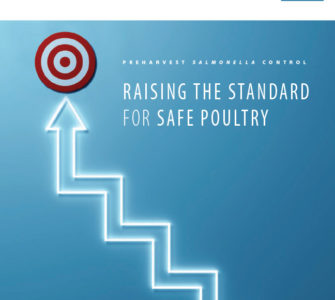Foster Farms: Community approach key to managing coryza spread in poultry
Tackling endemic poultry diseases as a community rather than as individual producers can play an important role in controlling and limiting their spread.
Robert O’Connor, DVM, senior vice president of technical services for Foster Farms in California, said his experience dealing with coryza outbreaks has shown a united approach can be vital in successfully managing disease.
And while that can sometimes result in taking measures which don’t directly benefit your own birds, working closely with neighbors, university researchers and staff can result in healthier flocks overall.
Speaking to Poultry Health Today, O’Connor said infectious coryza, an acute respiratory disease which can cause high mortality rates and typically affects older birds such as layers or broiler breeders, is not a common disease in young broilers. “I’ve been at Foster Farms since 1998 and never saw coryza, ever, until 2017,” O’Connor said.
The disease first started appearing in broilers as young as mid-20 days old and, according to O’Connor, the birds processed with a high incidence of airsacculitis. “It comes on as a respiratory disease, so we didn’t know it was coryza at first,” O’Connor said.
After lab testing revealed the true cause of the problem, O’Connor worked with scientists at the University of California Davis to identify likely sources of the outbreak.
Ruling out human or mechanical vectors, they now believe tiny pieces of manure with that bacteria on them were probably being carried by the wind into their operation from neighboring layer farms during manure spreading or manure transportation.
Some of the neighboring table-egg operations had been breaking with coryza even though they’d been vaccinating for many years, as some of their protocols and available products had changed, O’Connor said. “So how we actually got it from our neighbors, we still don’t know. But the fact our neighbors have coryza and continue to have outbreaks with it has then transmitted to us.”
Treatment options are very limited. Tetracycline was administered to broilers through feed or water, but that was not effective. Knowing that vaccines are not available for broilers, O’Connor realized a community strategy was needed if the disease issue was ever going to be resolved.
“The first approach…was with our neighbors,” he said. “Getting together with them and talking about their situation with [and] what they think the cause of the outbreaks had been.”
Those discussions led to work with academics and vaccine companies to consolidate vaccine protocols used by egg layers and to work on a trial, looking at the efficacy of vaccines in use.
“At this point I would call it endemic,” he added. “And until our neighbors no longer have outbreaks, we will continue to suffer from it.”
In Foster Farms’ own flocks, there have been a number of changes, including complete clean-outs to disinfect barns and pulling processing times forward.
“If birds are diagnosed at 38 days and they’re due to be processed at 48 days, we may process them at 40,” O’Connor said. “We’ve done a lot better with mortality in the field [and] in the plant in terms of efficiencies, because the airsacculitis has been less.”
Another mortality-reducing measure has been to vaccinate broilers against E. coli.
“E. Coli is obviously different [from] the coryza bacteria, but the airsacculitis is kind of a secondary infection brought on by E. Coli — kind of an opportunistic situation,” he said.
“So in trying to protect the birds from E. coli, we’re sort of blunting the coryza infection. And we do feel like we’ve seen some progress with that.”
For any poultry veterinarians concerned about respiratory problems in broilers, O’Connor said it’s important not to discount coryza. Even though on the books it’s not really a disease that you would look to infect broilers, it’s clearly possible.
“If you have broilers who are surrounded by more-mature bird populations, you need to have some surveillance on the disease issues going on in those populations, because this is a great example of an older-bird disease infecting younger birds,” O’Connor advised.
Posted on April 9, 2020

















